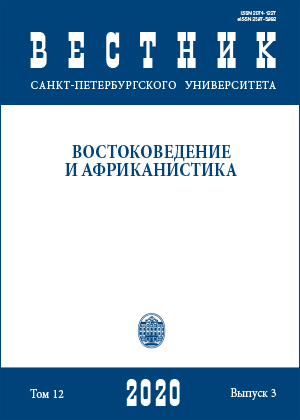Prophet Sulaymān in Classical Persian Poetry: Semantics and Structure of the Image
DOI:
https://doi.org/10.21638/spbu13.2020.306Abstract
The article discusses structure, semantic content, and functioning of the image of the Qur’anic prophet Sulaymān (Biblical Solomon) in Persian medieval poetry. Analysis of the poetic material leads to a conclusion about the main spheres of application of this image and its semantic connotations both in eulogistic and religious-mystical poetry. The article defines the main motifs of the Qur’anic story of this prophet that became a part of Persian poetic tradition and how they relate to the various themes that poets touch upon. For instance, motives of Sulaymān’s power over winds and demons, as well as images of his throne and the ring that gave him that power, were used primarily in eulogies when poets compared their patrons to the legendary king. A special place in Sufi poetry is occupied by the image of the hoopoe and the motif of the bird’s language that reveal topics of a disciple-mentor relationship and leadership in the path of mystical knowledge. As a global characteristic of Sulaymān’s image, we can outline its ambivalence which has its roots in the biblical narrative, where along with wisdom one can find mention of Solomon’s arrogance. Further exegetical tradition speaks of dethronement of Sulaymān by a demon as a punishment for arrogance. Later on, these themes can be found in Persian literature in the form of motifs of humility and frailty of the earthly life, which gained special meaning in the context of didactic and mystical poetry.
Keywords:
Persian poetry, image, prophet Sulaymān, stories of prophets in the Qur’an, narrative, motive
Downloads
References
Downloads
Published
How to Cite
Issue
Section
License
Articles of "Vestnik of Saint Petersburg University. Asian and African Studies" are open access distributed under the terms of the License Agreement with Saint Petersburg State University, which permits to the authors unrestricted distribution and self-archiving free of charge.





